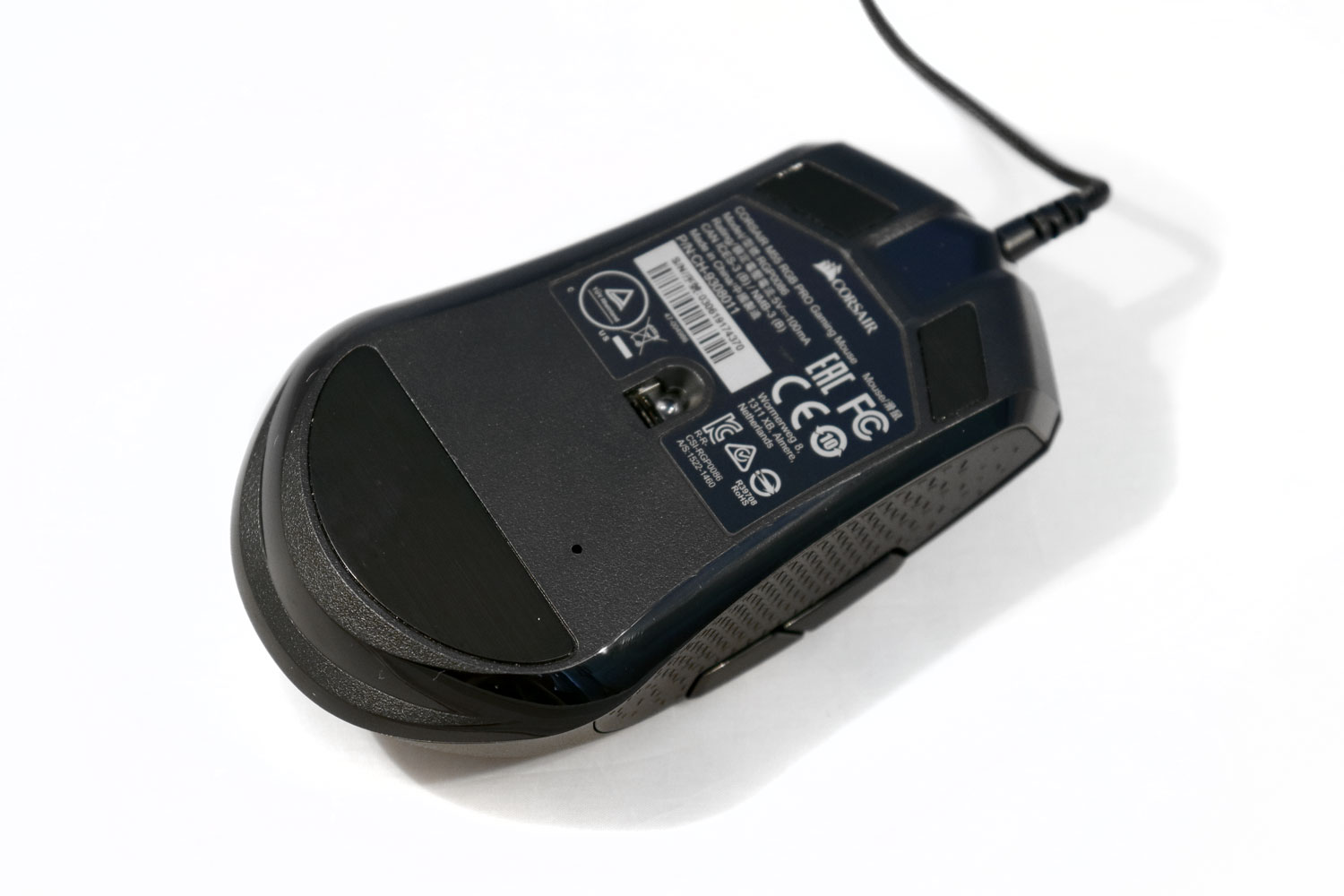
What do you really need from a gaming mouse? If you break it down to the bare minimum, most want a lightweight device that can accommodate their particular brand of grip and an accurate sensor. That’s really what the Corsair M55 RGB Pro is designed to be. Though it does dabble in fancier features like RGB lighting and programmable buttons, it lacks a lot of the bells and whistles that more expensive mice come with.
The question is, are any of those really worth paying for or is the M55 Pro RGB everything you need?
A mouse for everyone
The most immediate and arguably important aspect of the Corsair M55 RGB Pro is that it’s an ambidextrous mouse. That means that it can work just as well for left and right-handers, and it accommodates a wide range of grip types. I use a slightly off-angle finger grip and found this mouse to be a perfect fit for my particular brand of hold. Forcing my digits into a more typical palm or claw grip produced similar results, although I would imagine that those with larger hands or longer fingers might find this mouse a tad on the small side.
The M55 remains comfortable over long periods, and I never felt like anything got in my way, but comfort is one area where this mouse’s low $35 price can be felt. The thumb grips on either side do their job of giving you extra friction to prevent slipping, but they aren’t soft to the touch. They aren’t uncomfortable, but where more cushioned rubber grips let your digits sink into them, these feel rougher and cheaper.
It’s not a huge detriment to the way the mouse feels while in use and you quickly forget it in the heat of digital battle. But if you want a plush, cushioned gaming mouse, the M55 is not it.
Too sensitive at heart
This mouse uses the Pixart PAW3327 optical sensor which was developed specifically for Corsair and offers a wide (and oddly specific) sensitivity range of 200-12,400 dots-per-inch (DPI). That’s more than most will ever need but provides plenty of scope for switching to higher sensitivities in in-game turrets — or for those with limited movement.
The high-power sensor feels accurate and responsive during use with great tracking over multiple surface types. It could be a little too sensitive though. I found that when lifting the mouse the sensor would continue to track at almost a third of an inch above the mouse mat. That’s not something you’ll notice in average gaming if you have a large enough mousing surface, but if you’re gaming at particularly low sensitivities or have limited space to play in, that could prove problematic.
The overall lightweight design (86g) of the Corsair M55 Pro RGB though, does deliver a solid gaming experience. It tracked well in shooters, RTS titles, and more relaxed puzzler games with no glaring instances of mis-clicks or overshooting our targets. The main left/right switches did feel a little spongy, which is a surprise considering they come from the highly-rated Omron. They are rated for 50 million clicks though, so even though they aren’t the best we’ve ever used, they should last a long time.
Customization is possible, but limited

This isn’t a mouse that’s designed with tons of tweaking in mind, but there are options there if you want them. The 900MB install for the Corsair iCue software feels heavy handed for just a mouse, but it can provide customization options for any Corsair product you have installed, RAM included.
With the M55, you can tweak the RGB lighting of the logo and DPI indicator — the latter of which is useful if you like to cycle through sensitivities mid-game. You can also change the function of any button other than the left-click for single commands or macros.
Bargain or bargain bin?
The Corsair M55 Pro RGB is a decent little gaming mouse. It has a nice sensor that has its flaws but works well for the most part. With an overall comfortable and perfectly inclusive design, this is a mouse that anyone can use and enjoy. Especially at its sub $40 price.
If it were competing exclusively against other Corsair products, this would be enough to give it a rousing endorsement and suggest it as a fantastic budget gaming mouse. But it’s not gaming in a vacuum and some of the competition out there at similar prices are certainly better. Steelseries excellent Sensei 310 is within a few dollars of this mouse. Its comparatively strong, more entry-level, Rival 110, is even cheaper.
Corsair’s M55 Pro RGB is a good ambidextrous gaming mouse. It’s not fantastic, but it’s good and that may be enough, especially if you want to add it to your suite of Corsair products for unified RGB lighting.
Editors' Recommendations
- The best lightweight gaming mouse you can buy in 2022
- Corsair’s K65 RGB Mini revitalizes mainstream 60% keyboard goodness
- Have big hands? The Corsair Night Sword RGB is the gaming mouse for you








